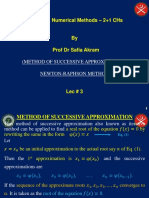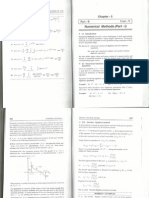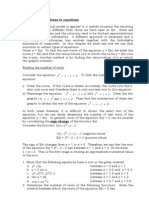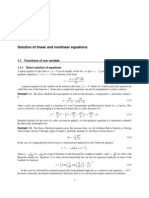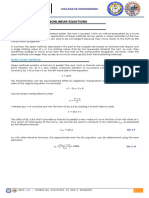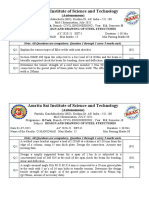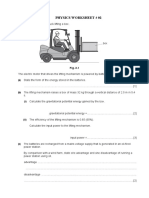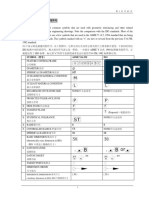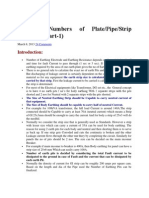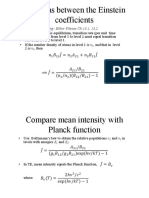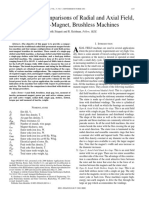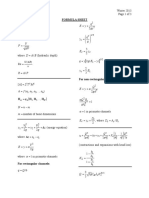0% found this document useful (0 votes)
84 views2 pages5 Secant Method Examples
The document discusses using the Secant method as an alternative to Newton's method to find roots of equations when the derivative is difficult to calculate. It explains that the Secant method requires two initial approximations and uses a formula to iteratively calculate new approximations that converge on the root. It then provides examples applying the Secant method to find roots of specific equations.
Uploaded by
Kenji GelbolingoCopyright
© © All Rights Reserved
We take content rights seriously. If you suspect this is your content, claim it here.
Available Formats
Download as PDF, TXT or read online on Scribd
0% found this document useful (0 votes)
84 views2 pages5 Secant Method Examples
The document discusses using the Secant method as an alternative to Newton's method to find roots of equations when the derivative is difficult to calculate. It explains that the Secant method requires two initial approximations and uses a formula to iteratively calculate new approximations that converge on the root. It then provides examples applying the Secant method to find roots of specific equations.
Uploaded by
Kenji GelbolingoCopyright
© © All Rights Reserved
We take content rights seriously. If you suspect this is your content, claim it here.
Available Formats
Download as PDF, TXT or read online on Scribd
/ 2










